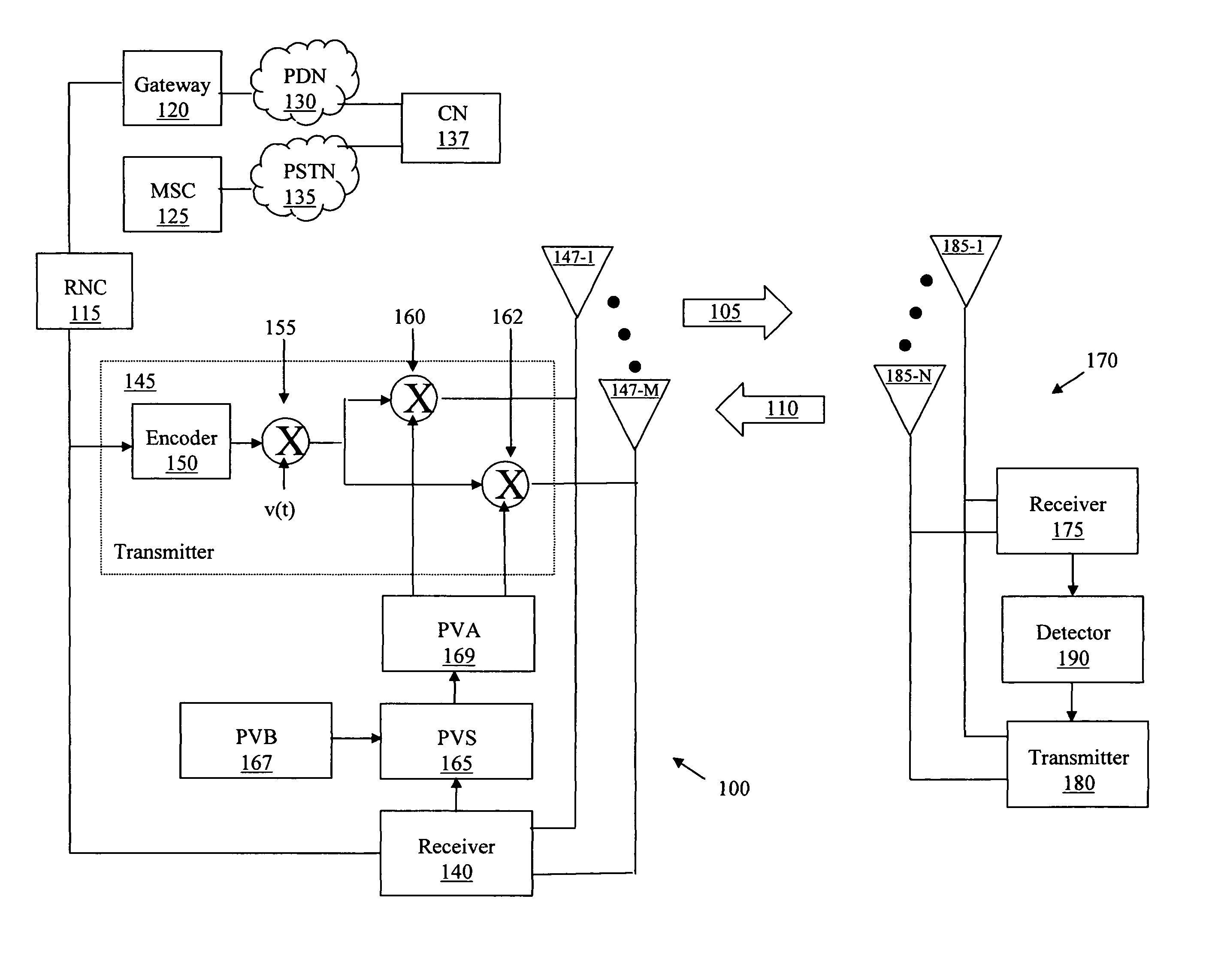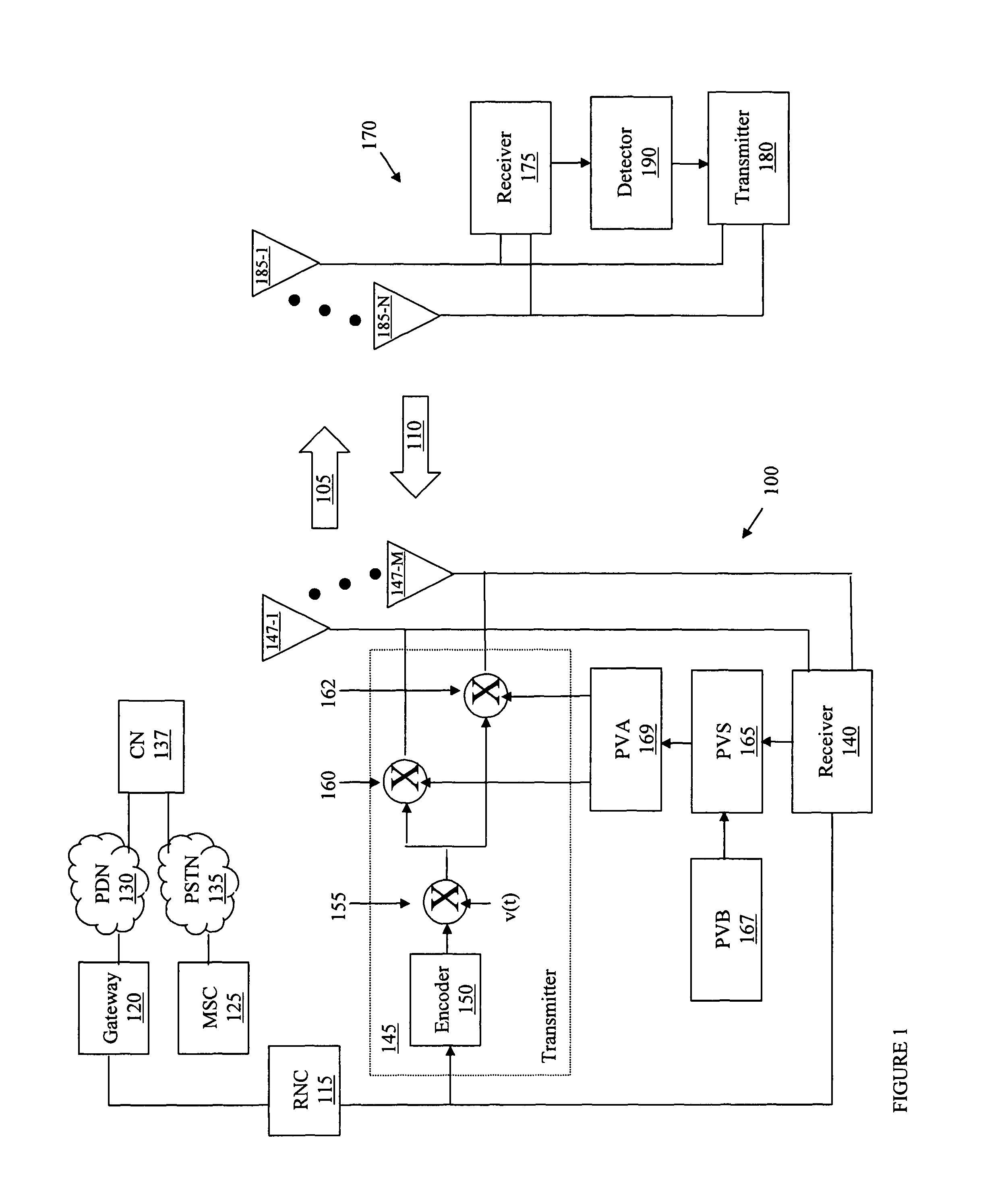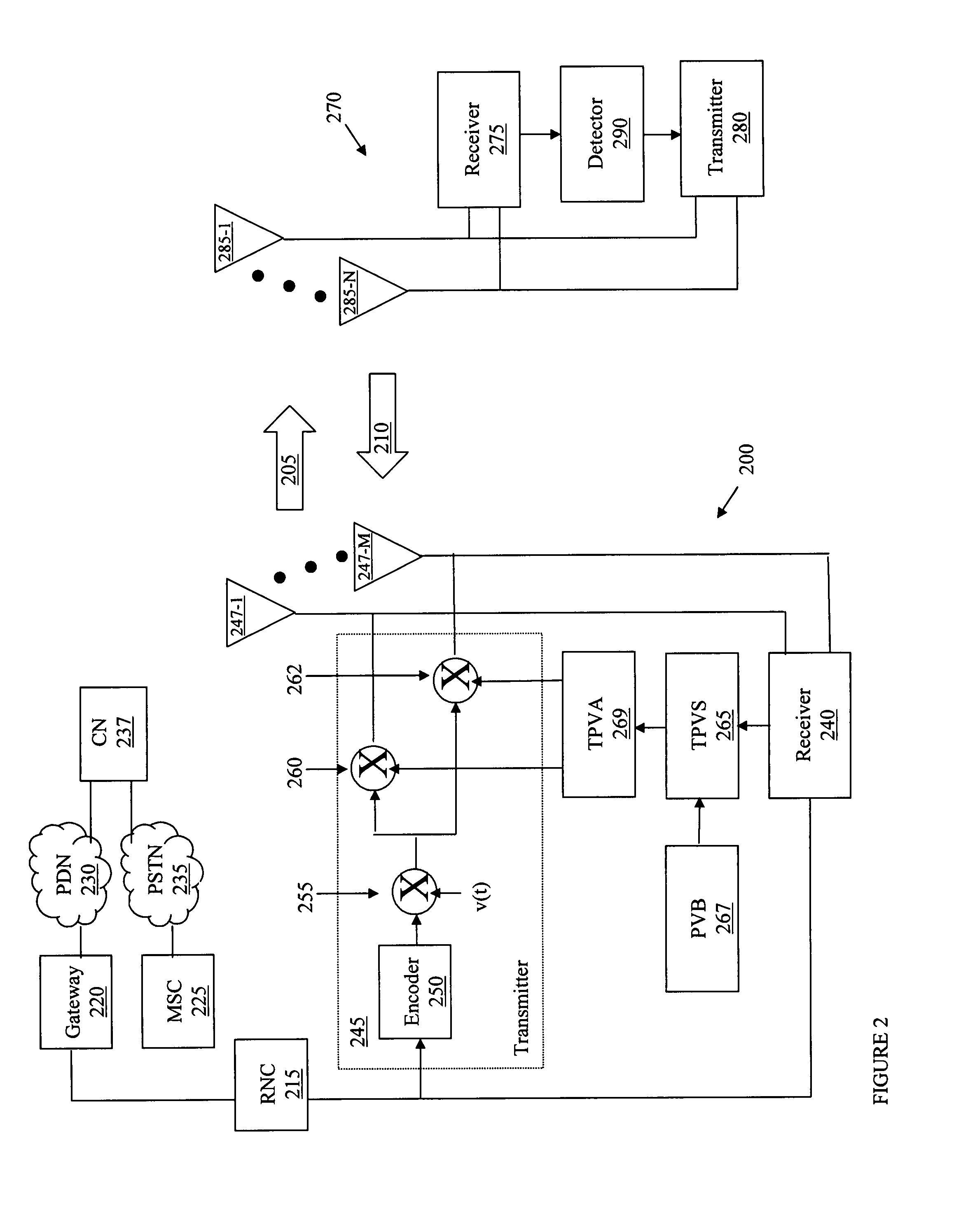Adaptive multi-beamforming systems and methods for communication systems
a multi-beamforming and communication system technology, applied in the field of communication systems, can solve problems such as inaccurate recovery of informational content at the receiving station, information communicated over a radio link is susceptible to distortion, and information delivered to a receiving station to differ from the corresponding information
- Summary
- Abstract
- Description
- Claims
- Application Information
AI Technical Summary
Benefits of technology
Problems solved by technology
Method used
Image
Examples
Embodiment Construction
[0031]The making and using of the presently preferred embodiments are discussed in detail below. It should be appreciated, however, that the present invention provides many applicable inventive concepts that can be embodied in a wide variety of specific contexts. The specific embodiments discussed are merely illustrative of specific ways to make and use the invention, and do not limit the scope of the invention.
[0032]The present invention will be described with respect to exemplary embodiments in a specific context of beamforming systems such as a quantized-feedback optimal adaptive (“QFOA”) multi-beamforming system that adaptively transmits a beamforming vector in a multiple-antenna frequency division duplex (“FDD”) system. The system is referred to as a quantized-feedback optimal adaptive multi-beamforming solution because the system and methodology adapt transmit beamforming vectors by computing directions of preferable adaptation and feeding quantized increment vectors back for ...
PUM
 Login to View More
Login to View More Abstract
Description
Claims
Application Information
 Login to View More
Login to View More - R&D
- Intellectual Property
- Life Sciences
- Materials
- Tech Scout
- Unparalleled Data Quality
- Higher Quality Content
- 60% Fewer Hallucinations
Browse by: Latest US Patents, China's latest patents, Technical Efficacy Thesaurus, Application Domain, Technology Topic, Popular Technical Reports.
© 2025 PatSnap. All rights reserved.Legal|Privacy policy|Modern Slavery Act Transparency Statement|Sitemap|About US| Contact US: help@patsnap.com



